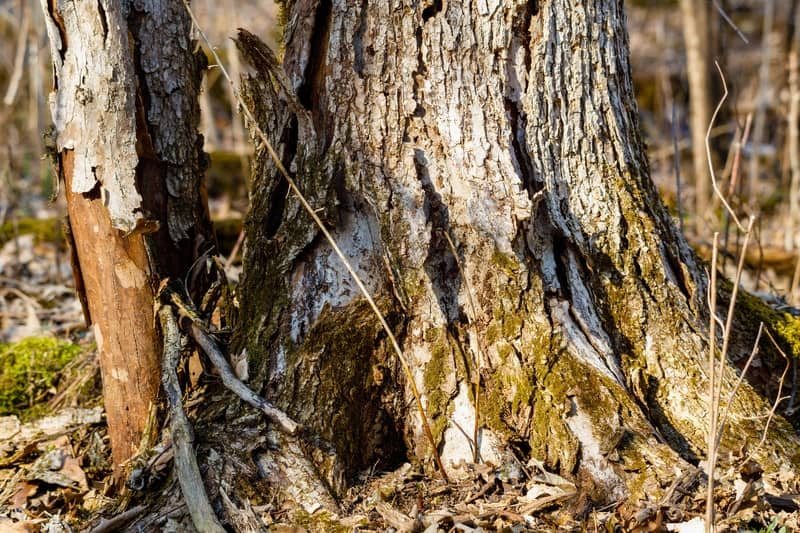As the heat of summer is upon us, our leafy friends are going to need an extra set of eyes to help them watch out for any potential illnesses or diseases that could affect them this summer. Knowing what to look for is the first step and we’re here to tell you a few tricks on how to identify common tree diseases!
Bronze Leaf Disease
As the name suggests, this fungus attacks poplars and turns an infected tree’s leaves a dark orangey-brown or reddish-brown colour along the outside edge and moving inward to the base. The veining in leaves will often remain bright green in contradiction to the orange-reds and browns. This type of disease can be lethal and needs to be treated quickly as it can spread and take out trees in as little as three years. Because Bronze Leaf disease establishes inside of the tree, the only course of action is to cut back the infected branches or in extreme cases the entire tree. Dispose of the branches in garbage bags to prevent more spread!
Elm Scale
Though it sounds like a disease, it’s actually an infestation of insects. Elm Scale shows up as a grimy, gray-black mould on leaves in higher branches of the tree and a sticky honeydew that doesn’t just cover the tree but can transfer to buildings and vehicles close by. Laws in Calgary state that pruning of elms can only occur between October 1st and March 31st to help prevent further spread of both Elm Scale and Dutch Elm Disease. Pruning the affected area between these dates is a good way to manage the disease, but you can also use an insecticide applied directly to the soil and transferred through the root system to kill off the infestation.
Dutch Elm Disease
Caused by a fungus spread by elm bark beetles, Dutch Elm Disease shows up as yellowing and withering leaves on the higher branches of the trees and causes starvation of the tree’s roots. Insecticides are often used to combat this disease because it’s so infectious and any pruning tools you use should be thoroughly sanitized. With Dutch Elm Disease, it’s a good idea to hit it hard with insecticide and additional fungicides if you decide to go that route.
Fire Blight
This bacteria attacks mainly fruit trees and indicators include a reddish to tan liquid ooze that seeps from diseased twigs, branches and cankers on the trunk. A tree with this ailment will have flowers and twigs shrivel and die off and in acute cases, cankers can begin to form on the branches as well. There isn’t a true cure for Fire Blight and the best way to handle it is to prune and remove the infected areas of the tree while being careful to sanitize pruning equipment. Using a bactericide can help prevent the bacteria from reproducing and limiting their survival.
Trees aren’t able to speak up when they’re feeling sick and the only way we can help them is to keep our eyes peeled for illnesses and diseases. Learn your trees and they’ll thank you for taking such good care of them by providing that essential shade during the hot months! If you have questions or you’d like some more help on what to look for, give our friendly team a call at 403.262.1666 and we’d be delighted to assist you!



